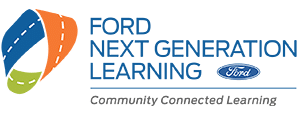Frequently Asked Questions
Question 1: How does Ford NGL define powerful partnerships?
Employers committed to a powerful partnership see their engagement with students and teachers, not only as giving back or good citizenship, but as true stakeholders in the future workforce and in the betterment of the community at large. For Ford NGL, powerful partnerships:
- Are built on a sturdy foundation that can last through personnel and organizational changes.
- Begin with clearly identified needs and mutual accountability for desired outcomes.
- Have clear descriptions of roles and responsibilities.
- Entail ongoing and direct engagement with students and teachers.
- Culminate with measurable success of those outcomes.
Question 2: What is the difference between a Ford NGL Powerful Partnerships System and Powerful Partnership Process?
Ford NGL has developed a Powerful Partnerships System and supporting process used to facilitate, foster, and strengthen a community’s relationships with community and employer partners.
The Powerful Partnerships System wraps the community around education and workforce needs by engaging a range of community partners in planning and continuous improvement while also facilitating powerful partnerships between schools and employers.
The Powerful Partnership Process is a continuous improvement cycle for engaging academy/pathway teacher teams and employer partners in addressing shared needs and achieving shared goals and rewards.
Question 3: What is the employer’s return on investment (ROI) from a powerful partnership?
It’s a total change of mindset and role. The employer partner is not just a consumer of educational products. Instead, the employer becomes an investor in the educational system. This is a much different approach than occasionally guest speaking in the classroom or volunteering as a benefactor at a school event. In a powerful partnership the employer is immersed in and integral to the learning experience. So why would employers want to enter into this more intensive type of partnership? The answer lies in its delivery of a clear return on the employer’s investment.
- Students have opportunities to practice application of academic knowledge and workplace skills within the context of the world of work. Future employees and new-hires arrive at their first job with relevant experience and preparation.
- Employers have opportunities for more in-depth observation of individual student development and can identify candidates for consideration as future employees.
- Because of the robust collaboration required, employers see the impact of their engagement firsthand on the professional development of teachers and the learning and skills acquired by the students.
This greater level of commitment combined with the synergy gained from working together rewards the employer with an increased ROI. The employer benefits from an enhanced reputation within the community, an improved talent pipeline, and a better prepared workforce.

